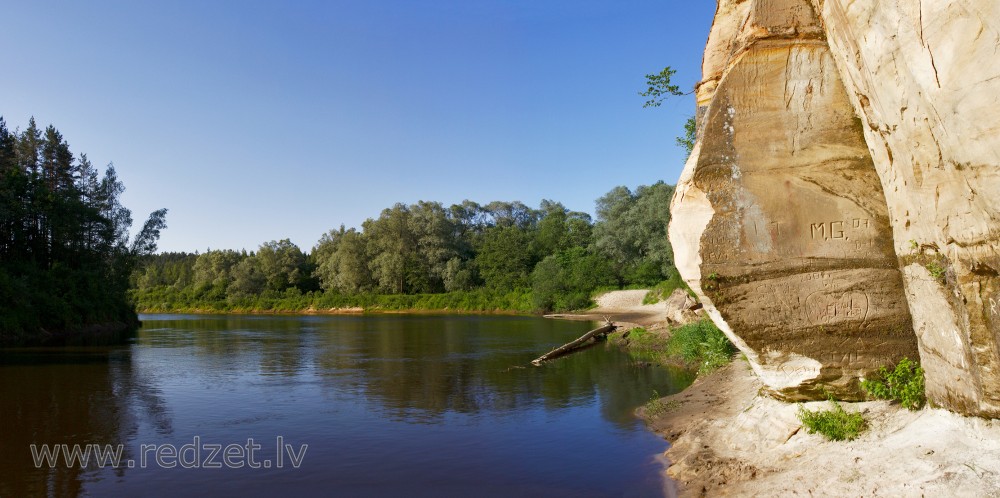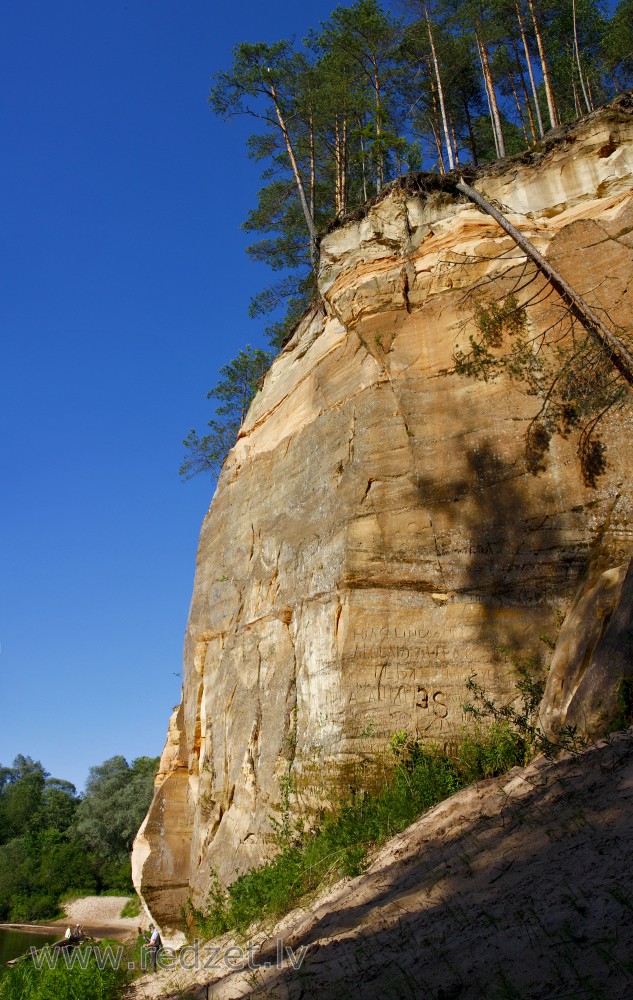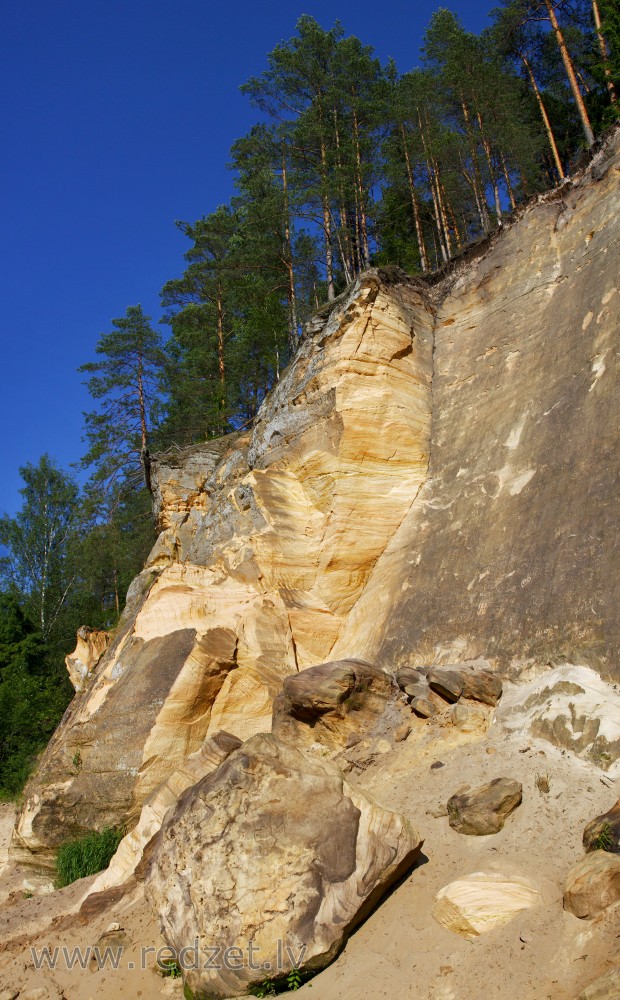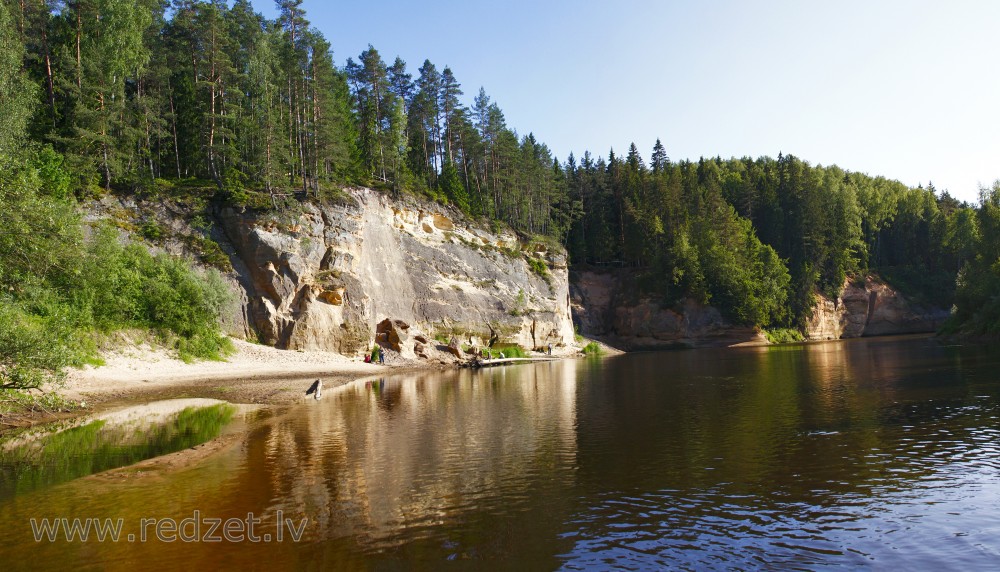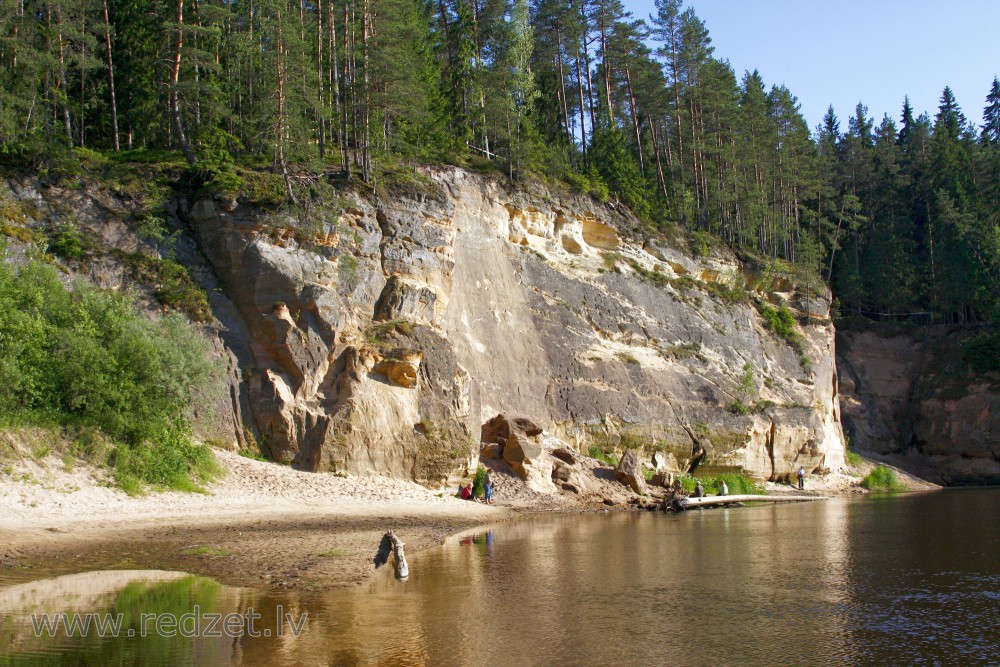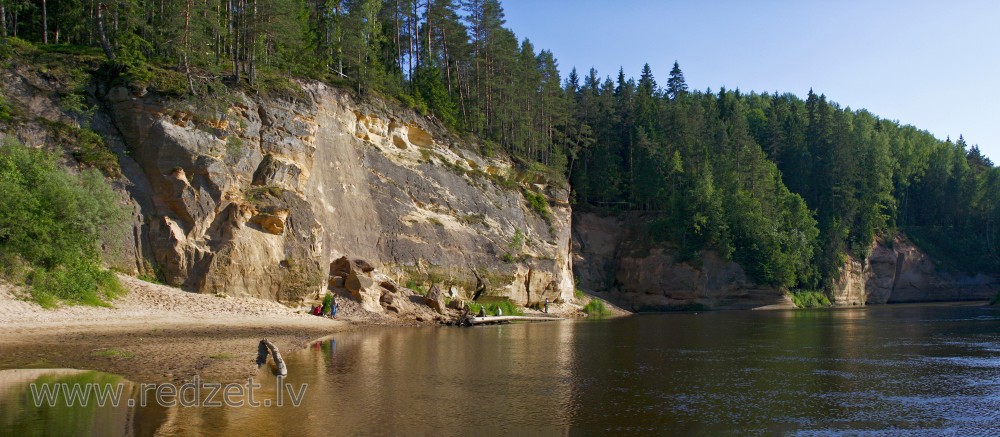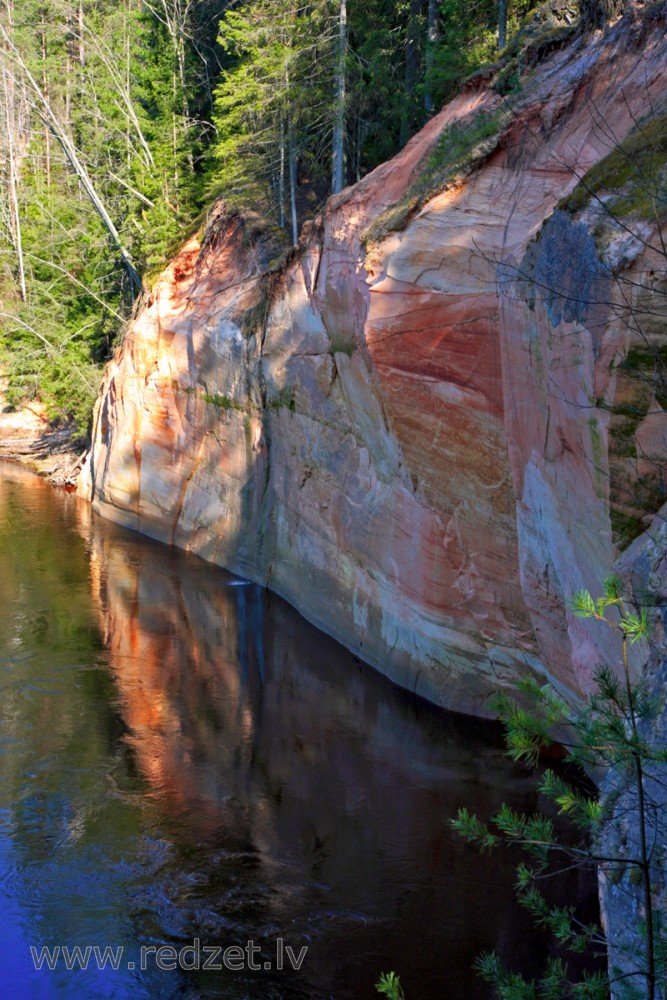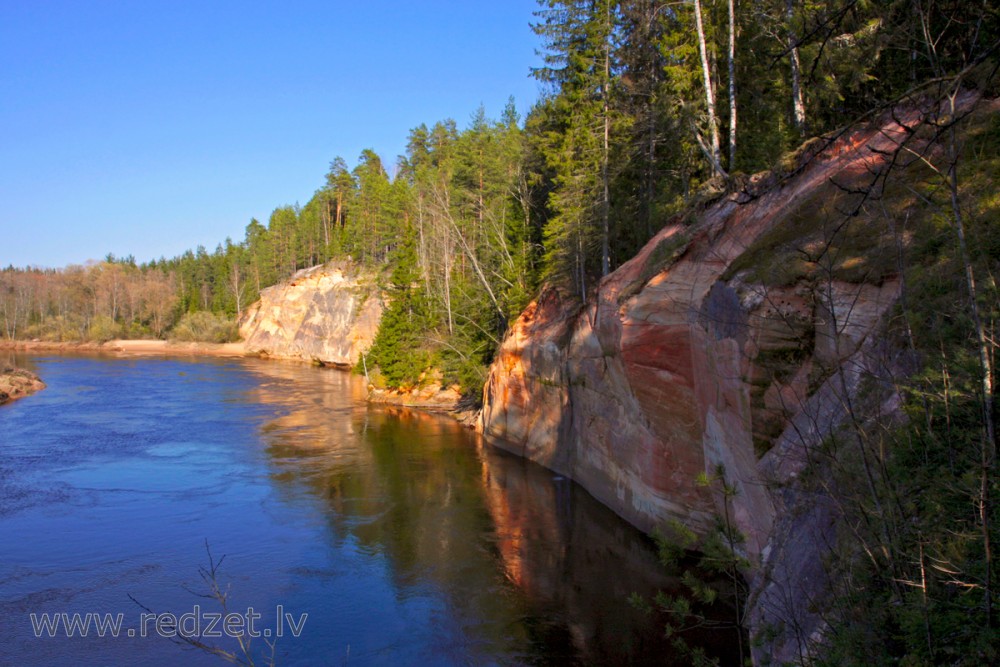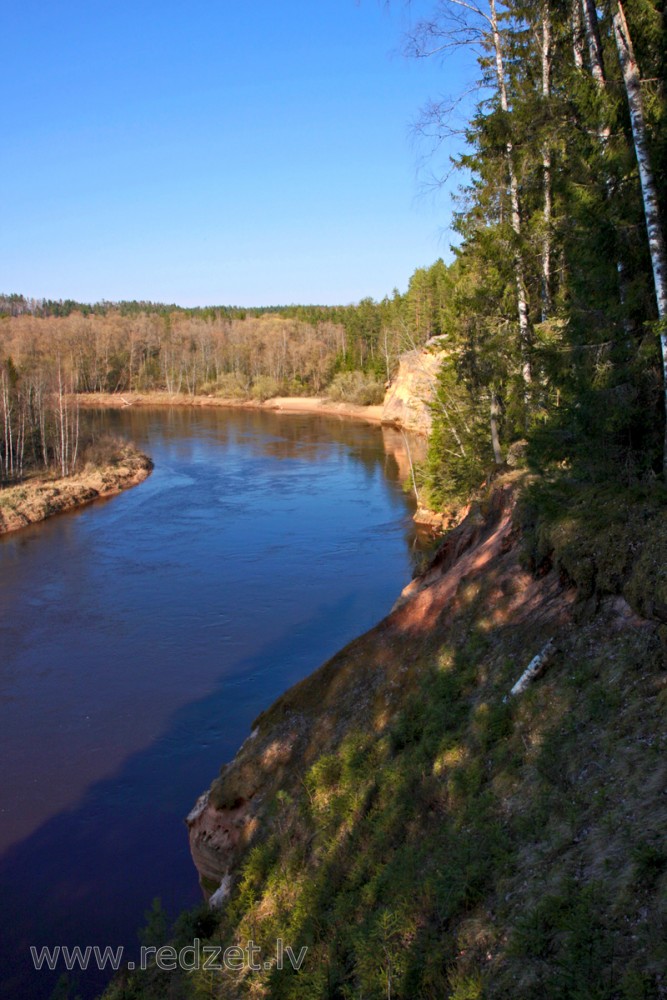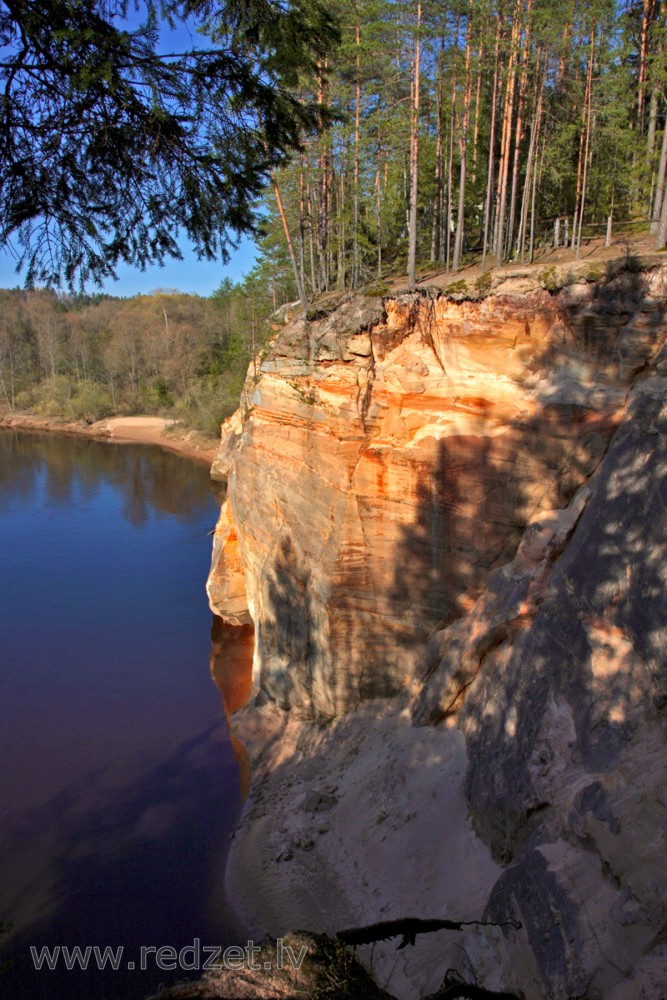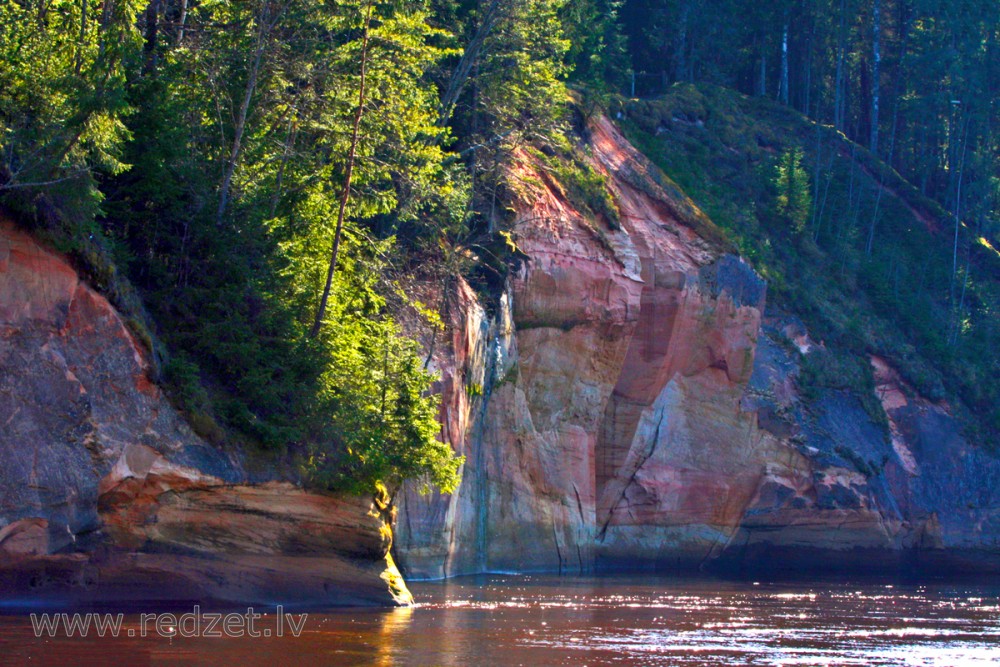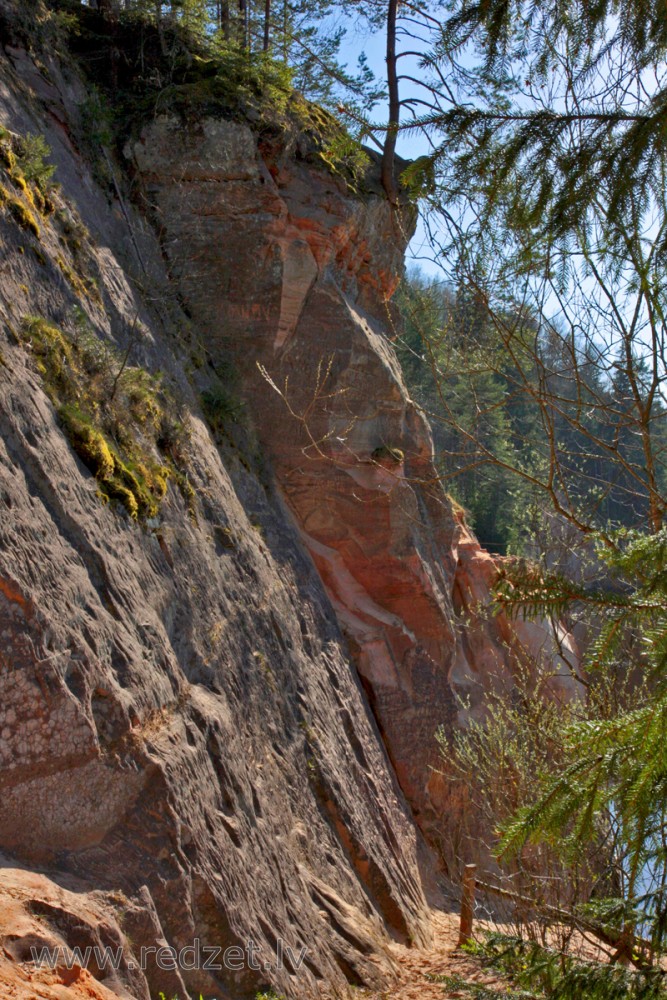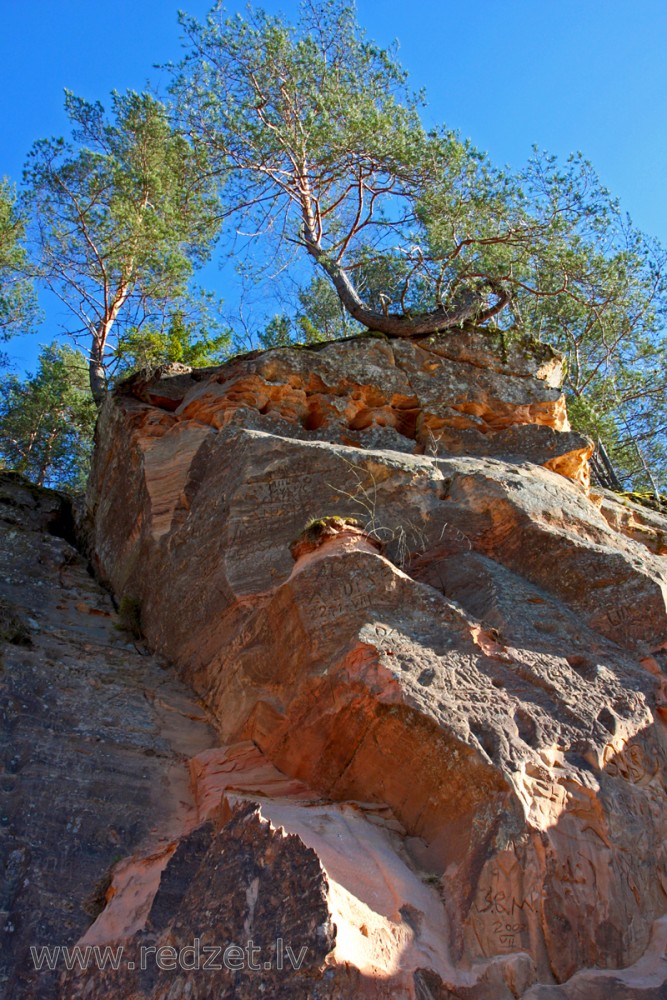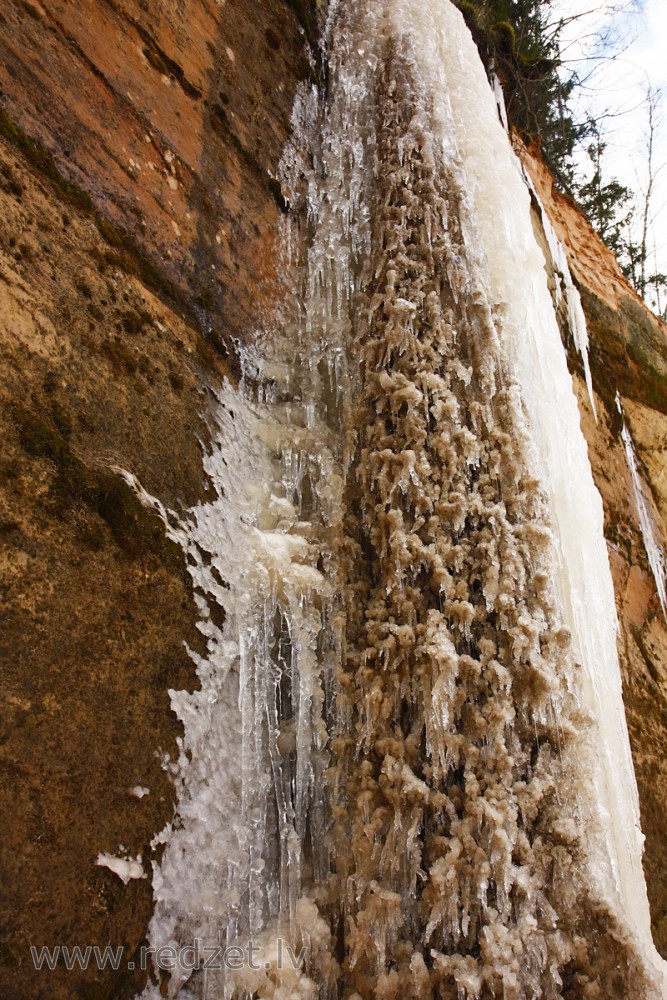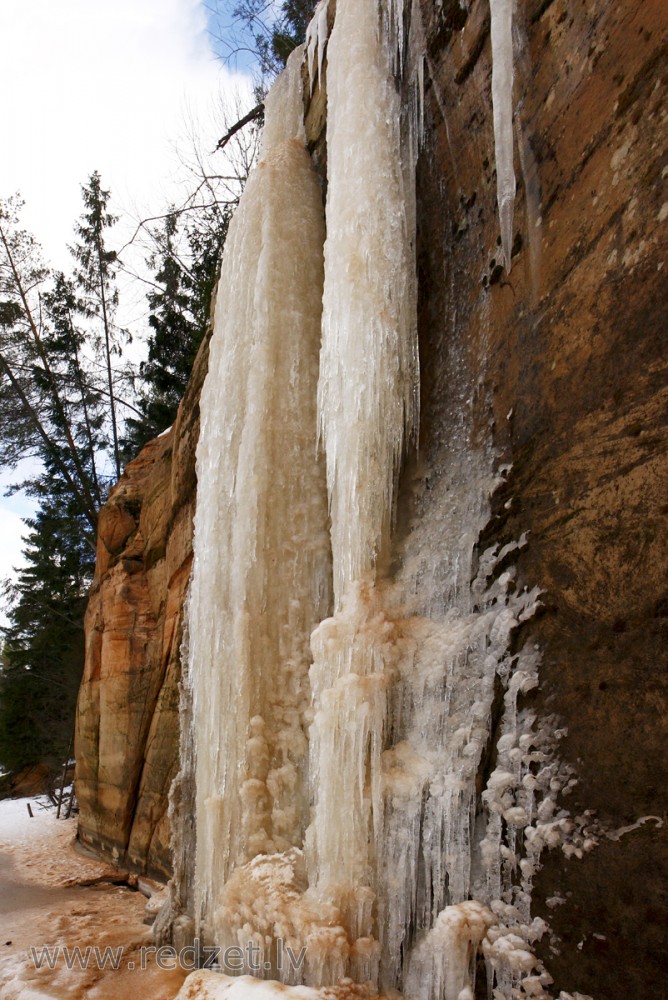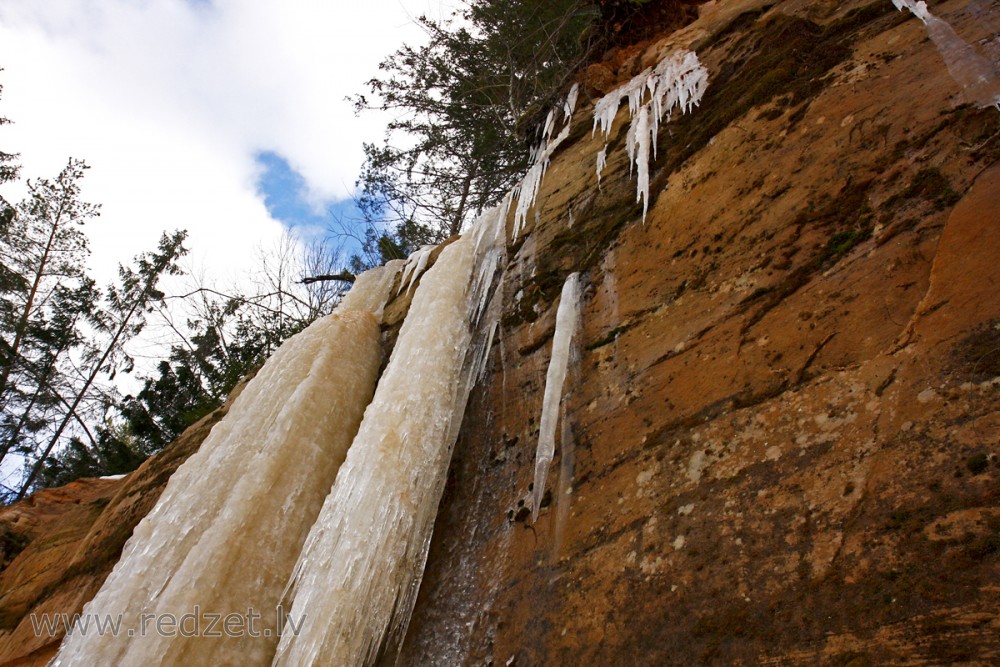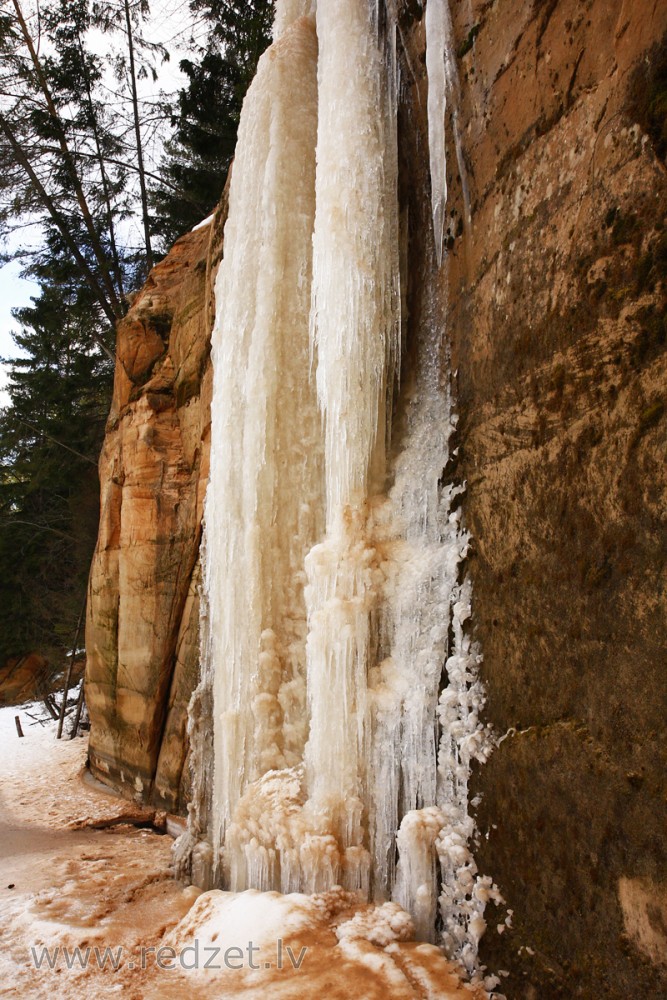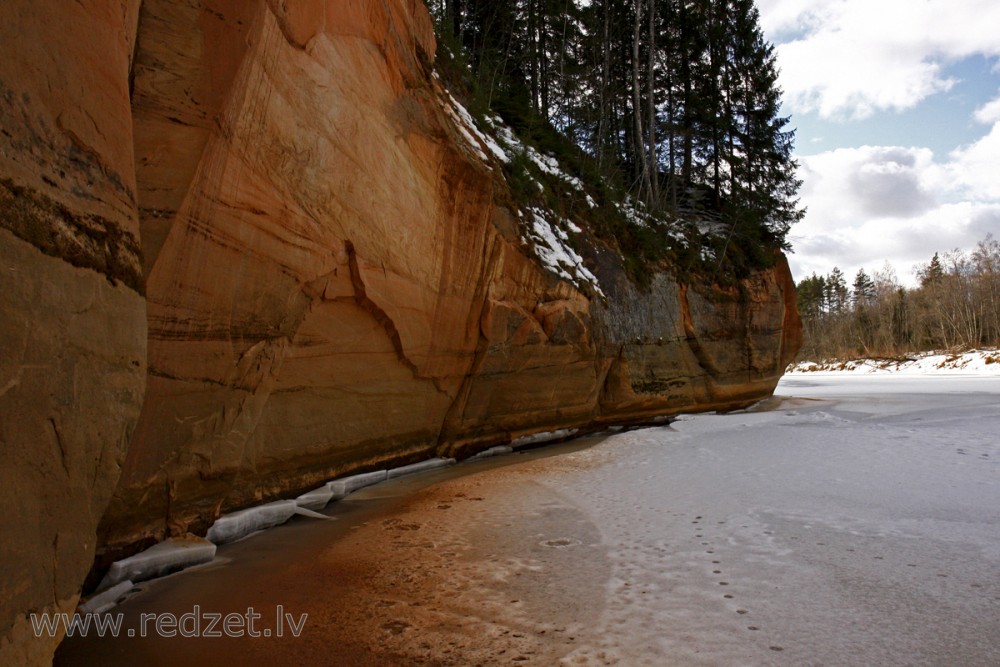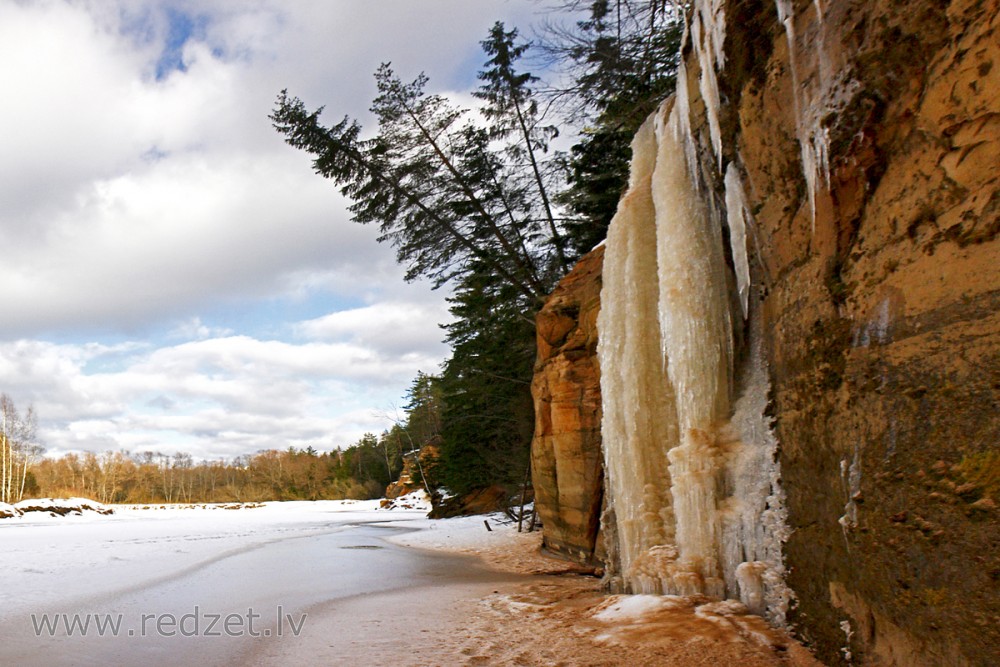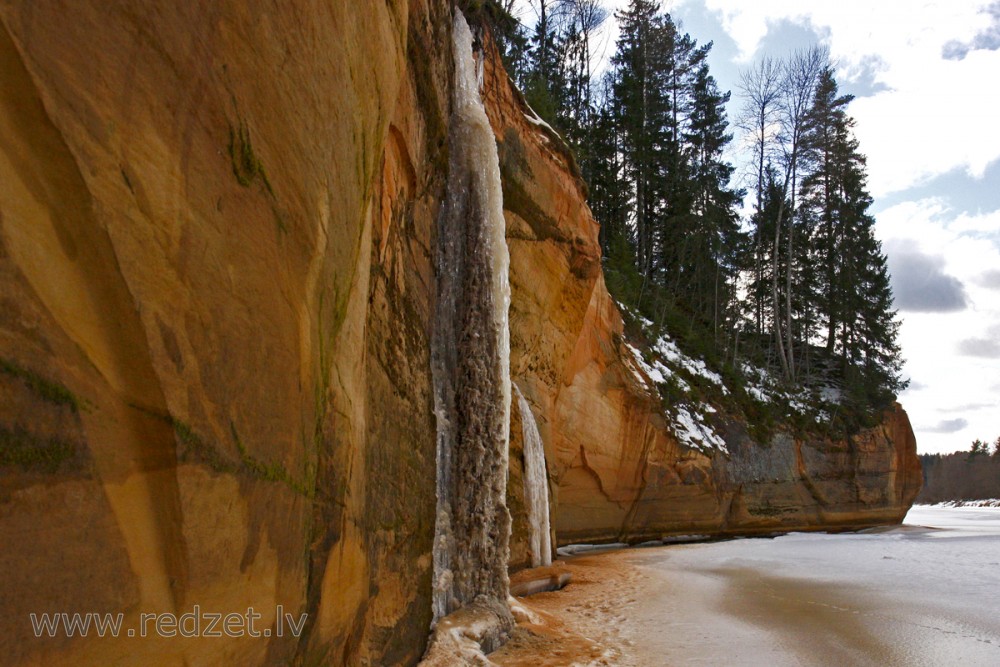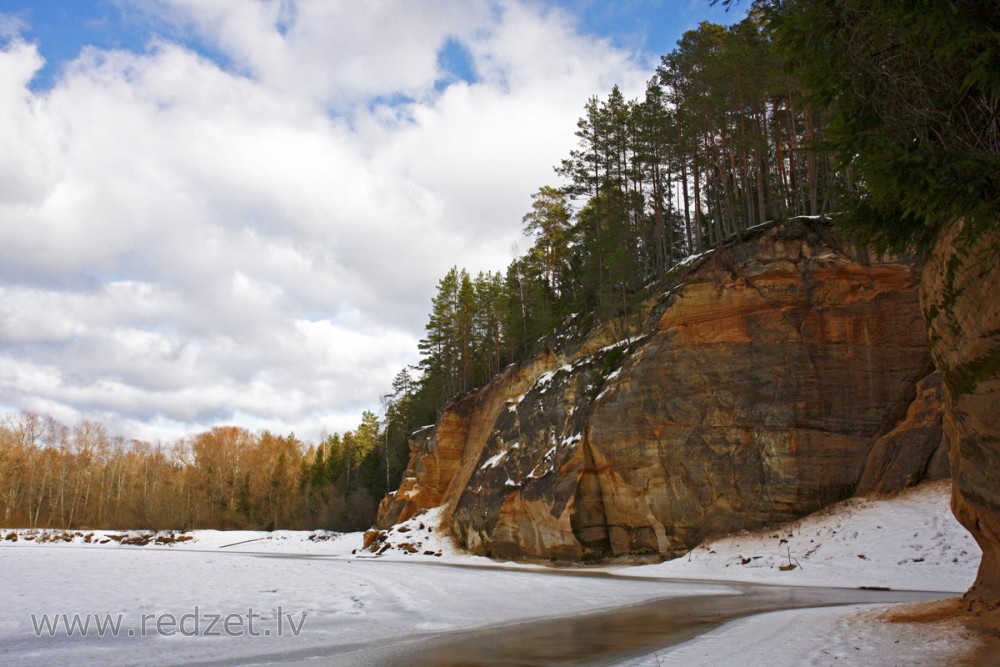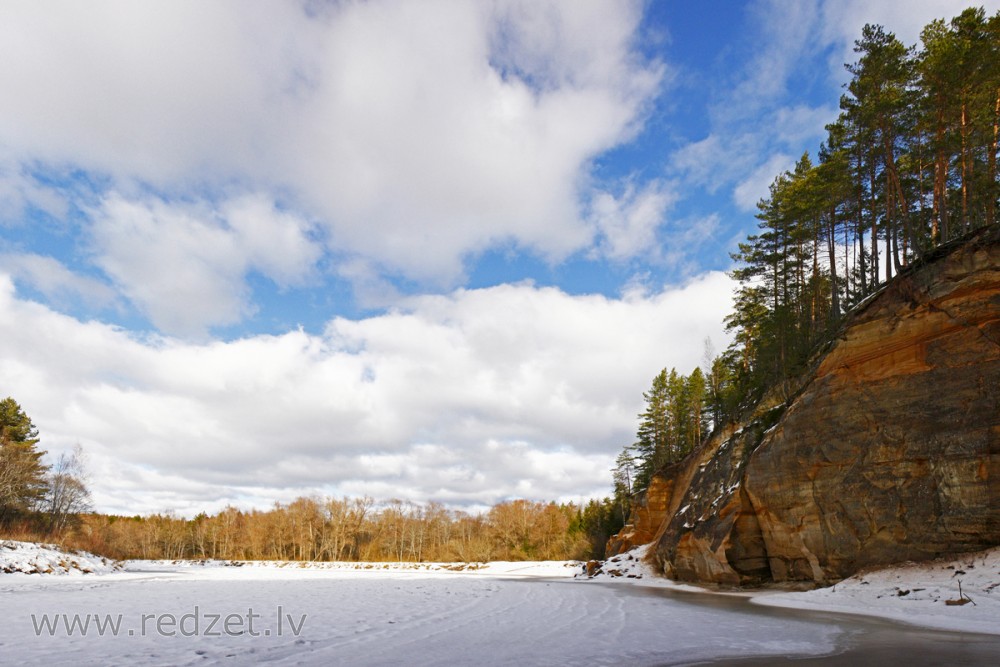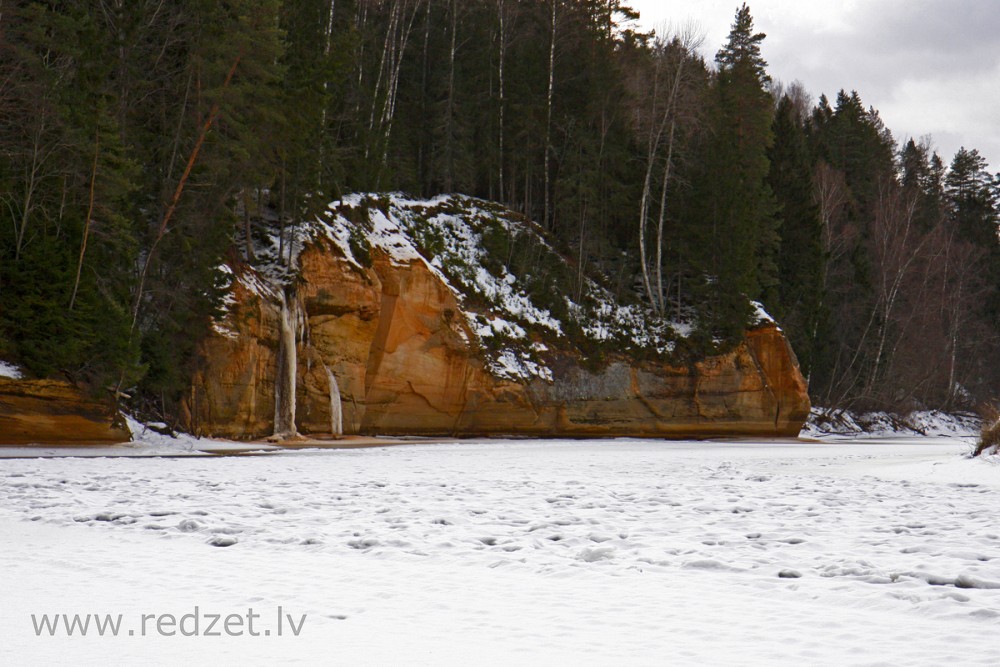Erglu Cliffs
The Erglu Cliffs (also called the Ergelu Cliffs) - one of the most continuous sandstone walls in the Baltics some 700 meters long and up to 22 meters high. About a 330-meter-long section sits on the bank of the Gauja River.
The Erglu Cliffs is one of the major natural monuments in Gauja National Park. The cliffs are situated about 7 kilometers from the center of Cesis town. A great view on the Gauja Valley opens to the north and to the west from the viewing point atop the cliffs.
The cliffs have allegedly been named after their echo, said to have sounded similarly to organ music (in Latvian, ergeles = organ).
The cliffs are fractured by joints, and slumping and sliding of sandstone blocks is possible therefore standing at the foot of the cliffs is dangerous.
Go for a walk
Follow the walking trails in the Erglu Cliffs to find out more about the Gauja River, the ancient legends about this beautiful river and interesting plants and bird species to be encountered on its banks.
Go boating
The cliffs seem even higher and more impressive from the river, therefore take a boating trip on the Gauja River.
www.latvia.travel/en
Ērgļu (Eagle) Cliffs
The mighty, majestic wall that rises straight out of the river Gauja is known as the Eagle Cliffs. It is the most impressive cliff in the valley of the Gauja river with characteristic features of a monolithic sandstone surface. The legends say that echoes from these cliffs sounded like an organ, so it is also known as the Organ Cliffs. Its' original name was Pieškaļu Cliffs, but was renamed in the Soviet times.
The length of the wall of the cliff is 700 metres and 300 metres of it washes against the Gauja river. The first 130 metres are composed of a vertical sandstone wall with a height of 22m, further along there are several protruding parts which are slightly directed into the river. There are a lot of fractures in the cliff, as well as signs of landslides and block sliding. At the foot of the cliff a small lake has formed. The height of the Western part of the cliffs, which is pushed back from the Gauja and hides in trees, is 21.5m. In the lower part, where the cliff almost comes to an end and again meets the water the Eagle niche and some small springs can be found.
turisms.cesis.lv/en






